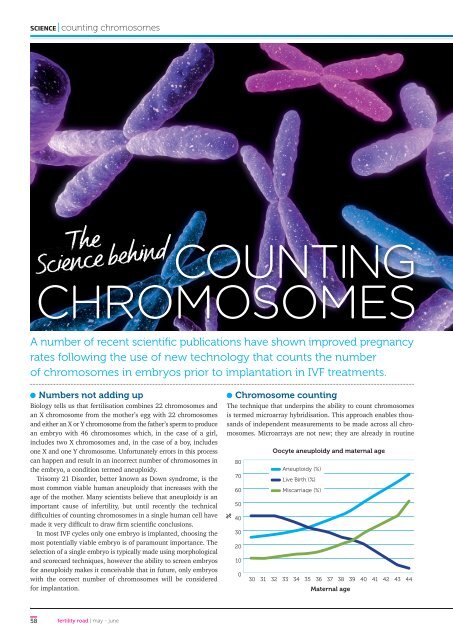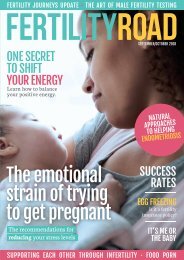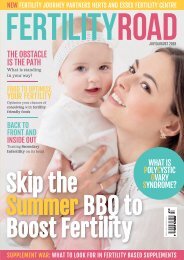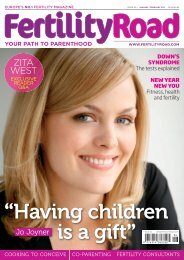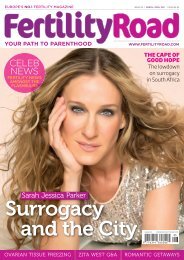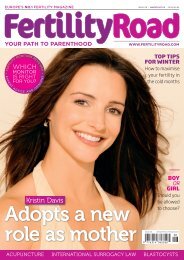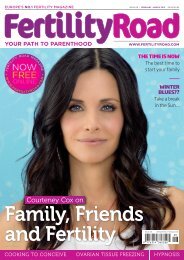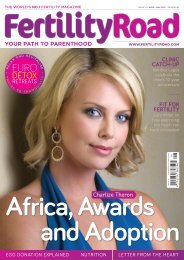Fertility Road Issue 06
You also want an ePaper? Increase the reach of your titles
YUMPU automatically turns print PDFs into web optimized ePapers that Google loves.
SCIENCE | counting chromosomes<br />
The<br />
Science behind<br />
COUNTING<br />
CHROMOSOMES<br />
A number of recent scientific publications have shown improved pregnancy<br />
rates following the use of new technology that counts the number<br />
of chromosomes in embryos prior to implantation in IVF treatments.<br />
Numbers not adding up<br />
Biology tells us that fertilisation combines 22 chromosomes and<br />
an X chromosome from the mother’s egg with 22 chromosomes<br />
and either an X or Y chromosome from the father’s sperm to produce<br />
an embryo with 46 chromosomes which, in the case of a girl,<br />
includes two X chromosomes and, in the case of a boy, includes<br />
one X and one Y chromosome. Unfortunately errors in this process<br />
can happen and result in an incorrect number of chromosomes in<br />
the embryo, a condition termed aneuploidy.<br />
Trisomy 21 Disorder, better known as Down syndrome, is the<br />
most common viable human aneuploidy that increases with the<br />
age of the mother. Many scientists believe that aneuploidy is an<br />
important cause of infertility, but until recently the technical<br />
difficulties of counting chromosomes in a single human cell have<br />
made it very difficult to draw firm scientific conclusions.<br />
In most IVF cycles only one embryo is implanted, choosing the<br />
most potentially viable embryo is of paramount importance. The<br />
selection of a single embryo is typically made using morphological<br />
and scorecard techniques, however the ability to screen embryos<br />
for aneuploidy makes it conceivable that in future, only embryos<br />
with the correct number of chromosomes will be considered<br />
for implantation.<br />
Chromosome counting<br />
The technique that underpins the ability to count chromosomes<br />
is termed microarray hybridisation. This approach enables thousands<br />
of independent measurements to be made across all chromosomes.<br />
Microarrays are not new; they are already in routine<br />
%<br />
80<br />
70<br />
60<br />
50<br />
40<br />
30<br />
20<br />
10<br />
0<br />
Oocyte aneuploidy and maternal age<br />
Aneuploidy (%)<br />
Live Birth (%)<br />
Miscarriage (%)<br />
30 31 32 33 34 35 36 37 38 39 40 41 42 43 44<br />
Maternal age<br />
58 fertility road | may - june


